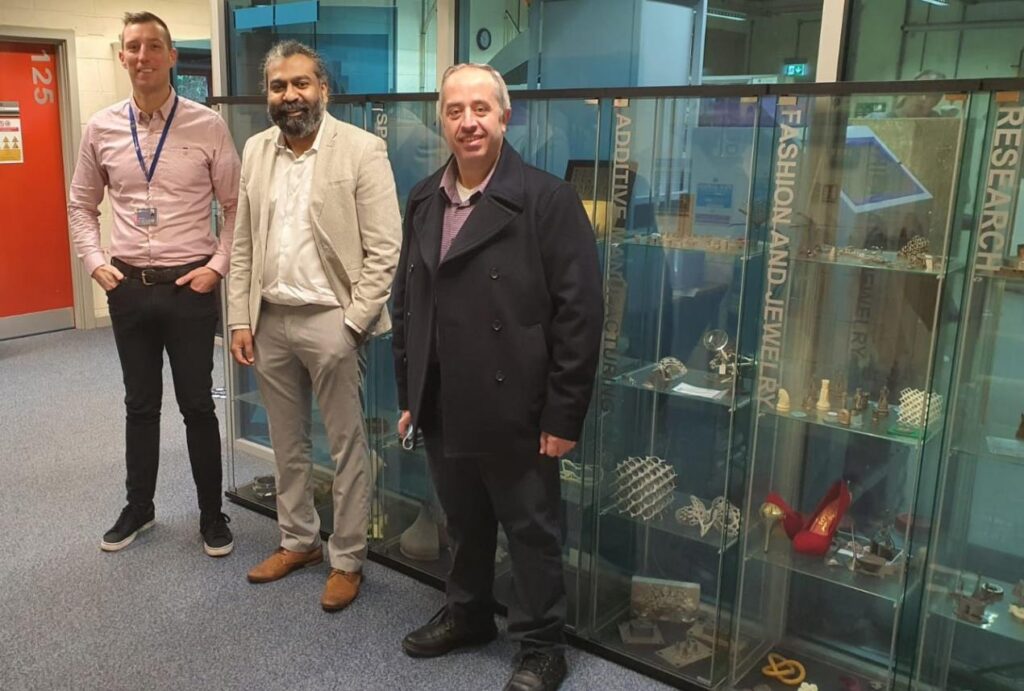Researchers prove 3D printing material can kill Covid-19 virus in 30 minutes

Researchers at the University Wolverhampton have collaborated on a project which has found that 3D printing material kills 100% of the Covid-19 virus in 30 minutes.
In July this year the University of Wolverhampton’s Additive Manufacturing Functional Materials (AMFM) research group and the Catholic University of Valencia’s Biomaterials and Bioengineering Lab published the exciting new collaborative research reporting the development of an antiviral copper-tungsten-silver (Cu-W-Ag) material that kills the Covid-19 causing virus within five hours.
Eighteen months since the World Health Organisation (WHO) announced the global pandemic, the Covid-19 outbreak continues to disrupt international economies with many countries globally implementing new restrictions due to the emergence of the Omicron variant that may possess vaccine evasiveness.
Improving on their previous research, the UK and Spanish teams’ latest publication proves 3D printable materials can kill the COVID-19 causing virus in as little as 30 minutes offering potential for virus transmission prevention.
The project was led by the University of Wolverhampton’s Dr Arun Arjunan, John Robinson, and Dr Ahmad Baroutaji, who again partnered with Ángel Serrano-Aroca’s group to assess the antiviral performance of 3D printing materials that could offer potential for preventative virus transmission and on-demand manufacturing.
211210 Research Team 3D Printing
Dr Arun Arjunan, Director of the University of Wolverhampton’s Centre for Engineering Innovation and Research (CEIR) stated: “Virus transmission can be direct (human-to-human) or indirect (airborne and/or contaminated surfaces) including respiratory droplets and therefore face masks have been reintroduced and again have become mandatory in many community settings.
“As airborne droplets below five microns can contain infectious SARS-CoV-2 and can remain suspended in the air for three hours, masks do offer some protection from the transmission. However, surfaces on the other hand can sustain infectious viruses from a few hours to nine days depending on the surface material and morphology. For example, stainless steel that is widely found in hospitals and medical settings can sustain SARS-CoV-2 survival for 7 days. Therefore, with the emergence of potential vaccine evasive variants antiviral materials that inactivate the virus offer much potential for transmission prevention.”
The interdisciplinary team used Laser Powder Bed Fusion (L-PBF) Additive Manufacturing (AM) techniques to fabricate a novel microporous architecture and assess the anti-viral performance of 3D printing material Cobalt-Chromium-Molybdenum (Co-Cr-Mo) – a material which is already commonly used in industrial 3D printing settings for medical and aerospace applications.
211210 Microporous 3D Printing
John Robinson, Lead researcher in the School of Engineering at the University’s Telford Innovation Campus, said: “The Co-Cr-Mo material was shown to have potent antiviral activity displaying a significant improvement on copper and silver alloys which are well known for their antimicrobial properties.
“To our knowledge we are the first to assess the anti-SARS-CoV-2 efficacy of Co-Cr-Mo which displayed 100% viral inactivation in 30 minutes. Therefore, our latest publication proves L-PBF and Co-Cr-Mo could be adopted for antiviral mask filters and heating, ventilation as well as air conditioning filtration systems for healthcare and general community settings. Additionally, Co-Cr-Mo could be used for door handles or other touch points where high potential for virus transmission could be reduced or eliminated.”
The research has been peer reviewed and published as open access to allow researchers and industry to access the data feely.





